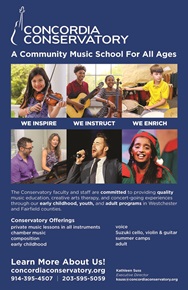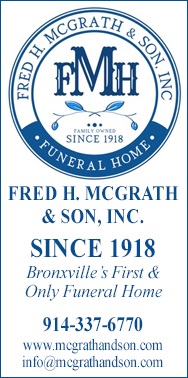Letter to Editor: Wake Smith on Safety of Synthetic Turf on Hayes Field

To the Editor:
Among the objections that have surfaced to the administration's proposed upgrade of Hayes Field is that the planned synthetic turf surface presents health hazards to the community.
Alarmed by some of the high-voltage rumors I have heard, I decided to dig into the issue with the help of two local physicians. For those similarly puzzling over this question as they decide how to vote on the May 19 referendum, I can provide a straightforward answer--I can find no scientific basis for public health concerns about the proposed new field surface on Hayes.
Let's start with some basic turf facts. Modern "third generation" synthetic fields are composed primarily of two components--vertical "grass blades" made of plastic and infill material between the blades, keeping them upright and providing shock absorption.
The blades are polyethylene--the most common form of plastic from which all kinds of close-contact products are made, including toothbrushes, mouth guards, baby pacifiers, and even joint replacements. Our local temple of organic eats, Whole Foods, notes on its website that for food packaging, they "use Polyethylene whenever possible." Google it for more details, but the point is--it's safe.
While the blades are the primary visual element of the field, the infill is actually 90% of the field material by weight, so that's the key component.
The most common infill material is "crumb rubber"--basically, ground-up tires. That's what's in Chambers Field, the existing synthetic field at the school, and in nearly every synthetic field on which our children play in Westchester and beyond. Now, tire rubber contains lead, zinc, and other heavy metals. I don't suggest you sprinkle it on your breakfast cereal, but no one has demonstrated that any of the bad stuff in crumb rubber finds its way into people or presents a health risk, despite lots of exposure.
A recent meta-analysis (i.e., a "study of studies") by professors at Stanford and the Chinese Academy of Sciences and published in a peer-reviewed scientific journal concluded that "concentrations of volatile and semi-volatile organic compounds in the air above artificial turf fields were typically not higher than the local background" and that "users of such fields, even professional athletes, were not exposed to elevated risks" (Hefa Cheng, et al., Environmental Science & Technology, Jan. 2014). An earlier study estimated that if a professional athlete spent five hours a day on a crumb rubber field for 30 years, it would raise their cancer risk by 1 in one million--a statistically insignificant amount (Edoardo Menachini, et al., Science of the Total Environment, 2011). Again, check these out yourself via the web.
Last winter, Bronxville residents skeptical about these same issues invited a local turf field expert to discuss the risks. An associate professor of pediatrics and community and preventative medicine from Mount Sinai Medical Center (an all-round impressive guy) was introduced with the expectation that he would drop the health hazard hammer on the Hayes Field plan. Instead, he cited three government studies, all of which failed to identify any material risks to people. The Federal EPA said, "On average, concentrations of components monitored were well below levels of concern." California said, "Most VOCs were below the limit of detection" and "those that were detected were below health based screening levels." New York said, "VOCs and SVOCs were not significantly elevated in air" above the fields. Both New York and a separate Connecticut study did raise concerns about the impact of water run-off from crumb rubber on the aquatic life downstream, but this doesn't apply to the Hayes Field plan.
And it turned out that his familiarity with artificial turf fields was more than theoretical; he provided anecdotes about how his daughter sometimes tripped over the upturned seams on the hyper-utilized synthetic fields of Randall's Island, where she plays youth sports. The conclusion of his presentation was that while the major studies found no issues, more studies should nonetheless be done. Perhaps so, but if the "anti-turf expert professor" lets his daughter play extensively on turf, that pretty much settles it for me.
Nonetheless, in an abundance of caution and to respond to the concerns that were raised about crumb rubber last winter, the school administration has made the decision to, instead, use a marginally more expensive organic infill product made of cork and coconut fibers.
Let me repeat--New Hayes will have none of the crumb rubber that gives rise (rightly or wrongly) to most of the health questions (for humans and for downstream fish) and will instead incorporate infill that's as organic as the grass it replaces. I am not personally persuaded that spending additional money to assuage unsubstantiated anxieties is a good use of funds, but if that helps some of our neighbors gain comfort, maybe that's a fair compromise.
Another health-related issue that arises in the literature is the fact that fields with crumb rubber infill retain more heat than does natural grass. The lighter-colored organic infill (brown rather than jet black) on New Hayes will not only absorb less heat, but will release humidity and moisture, keeping the field temperature cooler than the ambient air.
Moreover, the school closes the field when the temperature reaches the mid-90s, and the number of days during the academic year when it's that hot can be counted on one hand. Injury rates are yet another issue to be considered, but there are no clear trends as to whether turf fields are more or less injurious than grass fields that are well maintained (which Hayes is not).
So there you have it. Nine years of use on Chambers have turned up no elevated health issues, and New Hayes will be an organic upgrade from that. While natural grass has a certain romance to it, we already over-use Hayes to the point where it's anything but your "field of dreams."
We desperately lack field space, and a synthetic surface on an enlarged Hayes will double the scheduled field hours that are available to the school and the community. And if someone tees off to you about supposed safety hazards of turf fields, ask them to refer you to the governmental or peer-reviewed scientific study on which they are basing that statement. As far as I can determine, there is none.
Wake Smith
Bronxville, New York
May 13, 2015
Editor's note: MyhometownBronxville does not fact-check statements in letters to the editor, and the opinions do not necessarily reflect the thinking of its staff. Its objective in publishing letters to the editor is to give air to diverse thoughts and opinions of residents in the community.
Letters Directory
Bronxville is a quaint village (one square mile) located just 16 miles north of midtown Manhattan (roughly 30 minutes on the train) and has a population of approximately 6,500. It is known as a premier community with an excellent public school (K-12) and easy access to Manhattan. Bronxville offers many amenities including an attractive business district, a hospital (Lawrence Hospital), public paddle and tennis courts, fine dining at local restaurants, two private country clubs and a community library.
While the earliest settlers of Bronxville date back to the first half of the 18th century, the history of the modern suburb of Bronxville began in 1890 when William Van Duzer Lawrence purchased a farm and commissioned the architect, William A. Bates, to design a planned community of houses for well-known artists and professionals that became a thriving art colony. This community, now called Lawrence Park, is listed on the National register of Historic Places and many of the homes still have artists’ studios. A neighborhood association within Lawrence Park called “The Hilltop Association” keeps this heritage alive with art shows and other events for neighbors.
Bronxville offers many charming neighborhoods as well as a variety of living options for residents including single family homes, town houses, cooperatives and condominiums. One of the chief benefits of living in “the village” is that your children can attend the Bronxville School.
The Bronxville postal zone (10708, known as “Bronxville PO”) includes the village of Bronxville as well as the Chester Heights section of Eastchester, parts of Tuckahoe and the Lawrence Park West, Cedar Knolls, Armour Villa and Longvale sections of Yonkers. Many of these areas have their own distinct character. For instance, the Armour Villa section has many historic homes and even has its own newsletter called “The Villa Voice” which reports on neighborhood news.
Village of Bronxville Administrative Offices
337-6500
Open 9:00am - 4pm excluding holidays and weekends
Bronxville Police Department
337-0500
Open 24 hours
Bronxville Parking Violations
337-2024
Open 9:00am - 4pm excluding holidays and weekends
Bronxville Fire Deparment
793-6400






